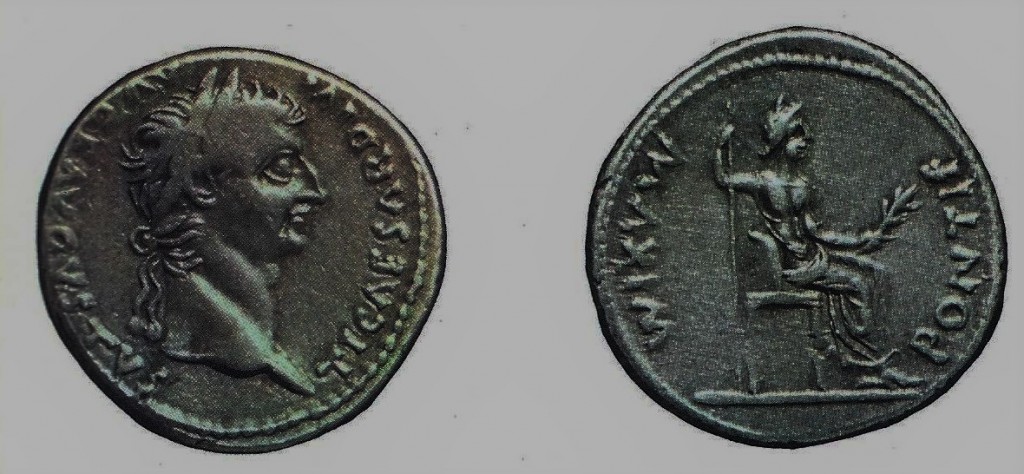03.06.14 A.D. 6 Jews Revolt against Archelaus; Zealot Movement Solidified
Life was miserable, especially for those living under the reign of Archelaus. Through high taxation people were reduced to peasant slaves. Anger and frustration were brewing along with a desire for national sovereignty. All the ingredients for a peasant uprising were present and ready to explode. Rebels who desired sovereignty were willing to kill and steal to accomplish their political goals. The wealthy and powerful aristocracy had no understanding of life for the common people, nor did they care. Therefore, when a new poll tax was imposed on all adult men, it was as the proverb says, “The straw that broke the camel’s back.” Especially since the tax was symbolic of slavery and was paid directly to the pagan treasury in Rome.[1] Not only was the tax offensive, but the coin with which it was to be paid had a graven image of Tiberius Caesar who claimed to be God (violation of Ex. 20:3-4). This tax, along with the harsh dictatorship of Archelaus, gave rise to another Jewish revolt.

03.06.14.A. COIN OF TIBERIUS CAESAR. The coin referred to by Jesus in Matthew 22:19-21 was probably one as shown, with the words “Tiberius Caesar, son of the deified Augustus.” Some Jews considered themselves defiled if they even touched such a coin. Wikipedia Commons.
In the midst of this social and political caldron, a new “religious” group emerged known as the Zealots, more commonly known as the “men of the dagger.” The Romans called them the Sicarii,[2] although some historians believe these were two different but similar groups. They were fanatically religious and passionately nationalistic.

The founder of the Zealots was Judah of Gamala (a/k/a Judas the Galilean; Acts 5:37), who was the son of Ezekias, (a/k/a Hezekias of Gamala), a well-known rebel leader executed by Herod the Great in 47 B.C. Judas had a co-conspirator, a Pharisee named Sadok, and together they taught a new doctrine that appealed to the Jewish nationalists – a doctrine that said God alone was to be the king of Israel. Together, they instigated riots and rebellions as well as theological disputes in the temple and said it was a sin to pay taxes to any pagan government such as Rome. Decades later when Jesus was confronted by the Pharisees about paying tribute (taxes) to Caesar, that tax issue was based on this new nationalistic doctrine.
Judas and Sadok organized freedom fighters throughout the land into a guerrilla-type military movement. It was their hope that someday a political-messiah or leader would rise to the occasion and bring political-salvation and freedom to the Jewish people.[3] Some scholars believe this was the same Judas who led a band of men into battle and captured a Roman armory in Sepphoris from which they stole a great deal of weaponry. It was an extremely humiliating defeat for the Romans, who not only executed the guards who failed their duty, but also crucified anyone suspected in the Zealot movement. All this took place less than three miles from Nazareth where Joseph and Mary lived with their son Jesus, who would have been about ten years old at the time. There can be little question that Roman soldiers searched every home in Nazareth and other nearby villages to look for weapons and crucify any suspected Zealot. Judas was among those who were quickly apprehended and crucified. His sons Jacob and Simeon continued the cause of nationalism, but they too, were captured and crucified by the Romans in A.D. 46 and 48 respectively. The Zealot movement eventually led to the destruction of Jerusalem and the temple in A.D. 70. Although Judas the Galilean was crucified, his doctrine continued to be a debated issue among the Jews. It would be the background of the discussion when Jesus was challenged by the Pharisees concerning whether it was right to pay taxes to Caesar, since this poll tax went directly into the Roman treasury. Just as Athronges, a self-proclaimed messiah, led a revolt with his four brothers that began on Passover (4 B.C.), believing it would bring divine victory, so did Judas the Galilean. Josephus recorded the event.
At the Feast of Unleavened Bread, which was now at hand, and is by the Jews called Passover, and used to be celebrated with a great number of sacrifices, an innumerable multitude of the people came out of the country to worship; some of these stood in the temple bewailing the rabbis (that had been put to death), and procured their sustenance by begging, in order to support their sedition. At this time Archelaus was affrighted, and privately sent a tribune with his cohort of soldiers upon them, before the disease should spread over the whole multitude, and gave orders that they should constrain those what, began the tumult by force, to be quiet. At these the whole multitude were irritated, threw stones at many of the soldiers, and killed them; but the tribune fled away wounded, and had much ado to escape so. After which they betook themselves to their sacrifices, as if they had done no mischief; nor did it appear to Archelaus that the multitude could be restrained without bloodshed. So he sent his whole army upon them, the footmen in great multitudes, by way of the city, and the horsemen by the way of the plain, who, falling upon them on the sudden, as they were offering their sacrifices, destroyed about three thousand of them; but the rest dispersed upon the adjoining mountains; these were followed by Archelaus’s heralds, who commanded everyone to retire to their homes, to which they all went, and left the festival.
Josephus, Wars 2.1.3 (10-13)[4]
Archelaus’ cruel and inhumane treatment of his Jewish subjects was the cause of another rebellion. He crushed the Jewish freedom fighters and had some 2,000 of them crucified along the seven roads[5] leading into the city of Jerusalem when Jesus was about ten or twelve years old. The public executions were a strong intimidation for most Jews to submit to the iron hand of the Romans. Shortly thereafter, the Roman Senate replaced Archelaus. There can be no doubt, that Jesus as a young boy would have seen these crucified Zealots and He most certainly heard of discussions concerning possible rebellions and the horrific suffering people endured. It was part of life.

[1]. Gilbrant, “Mark.” 333; Geikie, The Life and Works of Christ. 2:418.
[2]. See 02.01.21 and 02.01.22.
[3]. Flusser, Jesus. 260; Crossan, Who Killed Jesus? 55-56.
[4]. See also Josephus, Antiquities 17.8.4 and 18.1.1.
[5]. Kloner and Zissu, The Necropolis of Jerusalem in the Second Temple Period. 22-23.


